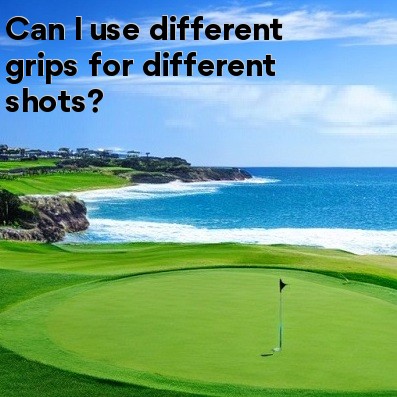
In golf, can I use different grips for different shots?
Yes, in golf, it is common for players to use different grips for different shots. The grip is one of the fundamental aspects of the golf swing, and different grips can help achieve different results on different shots. Let's take a look at some of the different grips that golfers use:
- The overlapping grip: This is the most common grip used by golfers. It involves placing the pinky finger of the trailing hand (right hand for right-handed golfers) over the index finger of the lead hand (left hand for right-handed golfers). This grip offers stability and control, and is often used for full shots with the irons and woods.
- The interlocking grip: This grip is similar to the overlapping grip, but the pinky finger of the trailing hand is interlocked with the index finger of the lead hand. This grip can help golfers with smaller hands generate more power and control, and is often used by players with shorter fingers or weaker grips.
- The baseball grip: This grip is less commonly used but can be effective for beginners or players with weak hand strength. It involves holding the club like a baseball bat, with all ten fingers wrapped around the grip. While this grip may lack control and finesse, it can help generate power in the swing.
- The double overlap grip: This grip is used by some professionals for shots that require a fade or slice. It involves gripping the club normally with the lead hand, and then overlapping with the trailing hand as well. This creates an exaggerated overlap, which helps promote a more open clubface at impact.
- The reverse overlap grip: This grip is often used for putting and can be helpful for players who struggle with a shaky or inconsistent stroke. It involves placing the index finger of the lead hand (left hand for right-handed golfers) over the pinky finger of the trailing hand. This grip encourages a smoother, more pendulum-like stroke.
In addition to these traditional grips, golfers may experiment with variations or modifications to suit their individual needs. Some players may adjust their grip for certain shots, such as using a stronger grip for a draw or a weaker grip for a fade. Others may change their grip based on the course conditions, such as using a firmer grip in wet or windy conditions for added stability.
It's important to note that while different grips can offer certain advantages, they may also come with their own set of challenges or adjustments. Changing your grip can influence your swing mechanics, and it's recommended to work with a golf professional or instructor to ensure that any grip changes are made correctly and in a way that benefits your overall game.
In conclusion, yes, it is absolutely acceptable and common for golfers to use different grips for different shots. Golfers have a variety of grip options to choose from, each with its own benefits and purposes. Experimenting with different grips can help golfers find what works best for their game and improve their overall performance on the course.





